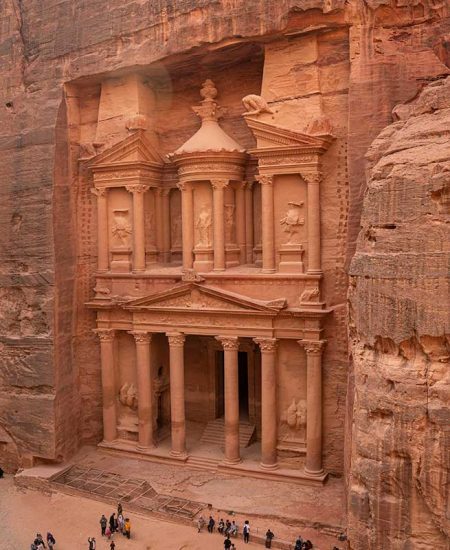As one of the most historically rich countries in the Middle East, Jordan has a long and fascinating past and a diverse geography. We will not focus on ancient or biblical Jordan, but rather on its modern and contemporary history.
In the early 20th century, during the decline of the Ottoman Empire, the region that is now Jordan was part of a broader geopolitical shift. After World War I, the area came under British control through the League of Nations mandate. In 1921, the Emirate of Transjordan was established under Emir Abdullah I, and later, in 1946, Jordan gained full independence as the Hashemite Kingdom of Jordan

MONUMENT
The Al-Khazneh (The Treasury), located in Petra, Jordan, is one of the most iconic and admired architectural wonders of the ancient world. It was carved out of sandstone in the 1st century AD by the Nabataeans, a nomadic Arab people who developed Petra as a major trading hub.
Its exact purpose is still debated, but many believe it was either a royal tomb or a temple. The façade blends Hellenistic and Near Eastern architectural styles, showing the cultural exchanges that took place through trade. Petra itself is a UNESCO World Heritage Site and one of the New Seven Wonders of the World.